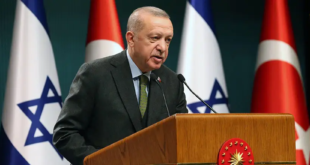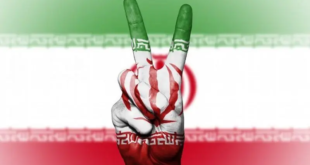After initial denials, Iran has admitted that it lost the use of thousands of centrifuges plus extensive aspects of its electricity from the April 11 incident.
Did Israel’s mythic intelligence agency, the Mossad, take its best shot at slowing Iran’s nuclear program last week and miss?
Although Israel’s supporters were complimenting the spy agency all week on the incident at Natanz on April 11 (about which sources told The Jerusalem Post and others that it was involved), which supposedly set back Tehran’s nuclear program by nine months, this may be a case of winning the battle but losing the war.
Whoever carried out the April 11 sabotage of the Islamic Republic’s nuclear program did so to achieve two goals:
One was to set back Iran’s clock for how quickly it could potentially break out to a nuclear program. Allegedly, Natanz’s centrifuges for enriching uranium were to be off-line or unusable for nine months.
The second broader goal was to eliminate Tehran’s bargaining leverage at the negotiating table with the US and world powers so that Washington would feel less pressure to rush a return to the 2015 nuclear deal and only return if it received significant concessions.
After initial denials, Iran has admitted it lost the use of thousands of centrifuges plus extensive aspects of its electricity from the April 11 incident.
But within days, the Islamic Republic was claiming it would make a major jump in uranium enrichment to the 60% level.
This act, if it happened, could bring Supreme Leader Ayatollah Ali Khamenei much closer to a nuclear weapon than he had been prior to the Natanz incident.
People familiar with the matter belittled the idea that Khamenei retained such a capability after the success of the Natanz sabotage. It was empty Iranian propaganda to save face and try to maintain a false sense of pressure on the US in negotiations, they told the Post.
Former IDF intelligence chief Aharon Ze’evi-Farkash and Institute for Science and International Security president David Albright expressed a combination of doubt and lack of clarity about how the Islamic Republic could achieve such a new high level of enrichment after being hit so hard at Natanz. But both said they were working only from public estimates.
When questioned by the Post, even the International Atomic Energy Agency initially seemed silent about any new Iranian violation, which could have supported the idea that it was all a bluff.
But over the weekend, the IAEA finally confirmed that Iran had in fact achieved a 60% enrichment level using new, advanced centrifuges that were apparently not among those knocked out on April 11.
It is still unknown why these centrifuges and their electrical power source survived undamaged.
Was it because they were off when the incident hit, because they were separated from the rest by distinct electrical systems or geography, or because they were being powered by alleged reserve electricity that Iran maintained in case of such an incident (following a similar method of attack on the Fordow nuclear facility’s electrical power in 2012)?
The amount of enriched uranium is still tiny: only a couple of hundred grams per day, compared with the kilograms that uranium enrichment is typically measured in.
But even this slow-moving process maintains pressure on the US and shortens the clock for the Islamic Republic to break out to a nuclear bomb.
Rather, than giving the US more time and leverage, the net total impact of the April 11 incident and the jump to 60% enrichment seems to have given the Biden administration a deeper sense of purpose and an understanding that speed is of the utmost importance to complete the negotiations before any new sabotage might further upset the applecart.
The US, Iran and China all made positive comments about progress in the negotiations over the weekend despite the April 11 incident and the 60%-enrichment announcement.
Alternatively, this was the endgame that Washington and Tehran always intended, and the two sides did not change their approach after last week’s events.
But even if that is true, it means that the April 11 incident plus Khamenei’s reaction may not have advanced Israel’s broader policy goals of driving the US toward taking longer to strike a tougher deal.
If so, it is possible that a remarkable intelligence operation may have succeeded tactically but failed at a strategic level.
Iran’s elections are set for June 18, and there is high pressure for at least an interim deal toward returning to the nuclear deal before Election Day.
The coming month or so will likely tell whether the sabotage of Natanz was worth it.
 Eurasia Press & News
Eurasia Press & News




